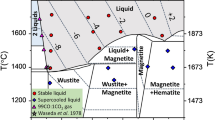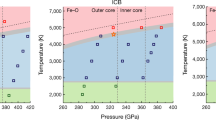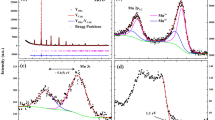Abstract
IT was discovered by Mishima1 that very good permanent magnets could be produced by the suitable heat-treatment of iron-nickel-aluminium alloys, of compositions near Fe2NiAl. In search of an explanation, we have made a comprehensive X-ray examination of slowly cooled iron-nickel-aluminium alloys. The results show considerable divergences from Köster's diagram2 (see Fig. 1), and shed new light on the results of earlier X-ray work on the magnetic alloys3,4,5.
This is a preview of subscription content, access via your institution
Access options
Subscribe to this journal
Receive 51 print issues and online access
$199.00 per year
only $3.90 per issue
Buy this article
- Purchase on Springer Link
- Instant access to full article PDF
Prices may be subject to local taxes which are calculated during checkout
Similar content being viewed by others
References
Mishima, T., Stahl u. Eisen, 53, 79 (1931).
Köster, W., Archiv. Eteenhutt., 7, 257 (1933-34).
Werestchiagan, L., and Kurdjumov, G., Tech. Phys. U.S.S.R., 2, 1 (1935).
Glocker, R., Pfister, H., and Wiest, P., Archiv. Eissenhutt., 8, 561 (1934-35).
Burgers, W. G., and Snoek, G., Physica, 2 (10), 1064 (1935).
Author information
Authors and Affiliations
Rights and permissions
About this article
Cite this article
BRADLEY, A., TAYLOR, A. An X-Ray Investigation of the Cause of High Coercivity in Iron-Nickel-Aluminium Alloys. Nature 140, 1012–1013 (1937). https://doi.org/10.1038/1401012a0
Issue Date:
DOI: https://doi.org/10.1038/1401012a0
This article is cited by
-
Miscibility gap in Fe-Ni-Al and Fe-Ni-Al-Co systems
Metallurgical Transactions A (1984)
-
Application of X-Rays to the Study of Alloys*
Nature (1940)
-
Structure of Metals
Nature (1938)
-
Structure of Metals
Nature (1938)
Comments
By submitting a comment you agree to abide by our Terms and Community Guidelines. If you find something abusive or that does not comply with our terms or guidelines please flag it as inappropriate.



